The Mokpo Namhang Urban Wetland (N 34°47’26.72”; E 126°24’50.52”) is the largest remaining relict area of inter tidal wetland in the highly modified Yeongsan Estuary, located in Mokpo City, Jeollanam Province. While much of the 50 ha site itself is also highly modified (including two areas impounded by seawalls) it still has multiple values, including for biodiversity (especially birds – with two globally threatened species recorded to date), for environmental education and for recreation. Other values, for example in relation to water quality, have yet to be measured. Despite this, there are considerable pressures on the site, including infilling part of the wetland (initiated by the local office of the Ministry of Land, Transport and Maritime Affairs during the project period, in late October 2008), water quality issues and disturbance.
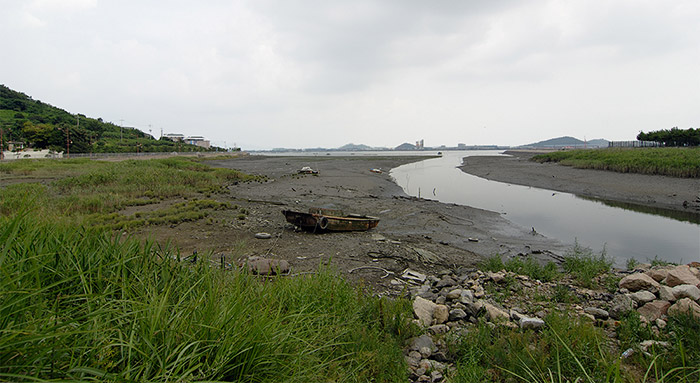
Birds Korea initiated the UNDP-GEF/Yellow Sea Large Marine Ecosystem (YSLME)-supported project “Establishing preliminary guidelines, processes and basic designs for the enhancement, restoration and “Wise Use” of the Mokpo Namhang Urban Wetland” in order:
To gather data, especially on biodiversity and other natural values, supported by the site;
To promote awareness of these values, while involving local and national stakeholders;
To gather expert opinions on the site’s present condition and potential restoration;
To present an improved vision of the site, as a small and functioning urban wetland that has high conservation value; that is important to the public; and that can be managed through a focussed and adequately funded management plan. The vision for the site, and the steps towards achieving it, should over time lead to an increase in the area of wetland habitat, a reduction in disturbance, an improvement in water quality, an increase in key species, and increased interest and appropriate (“wise”) human use of the site.
and
While important for the Mokpo Namhang Urban Wetland in itself, this process and vision towards conservation, restoration and wise use of the site is also extremely valuable for wetland conservation at the national level. Especially, there are few (if any) models of wetland restoration at present in the ROK that seem in full accordance with Ramsar guidance and “best practise.” This project enables an improved process towards best practice to be mapped out and made more accessible to all.

Our work on the site (and this project) towards this end has therefore to date generated considerable interest, especially as the project period has coincided both with the nation’s hosting of the Tenth Ramsar Convention conference (Changwon City, October 28th-November 4th), and with assessment of wetlands nationwide fit for restoration by a specialist committee (Chaired by Professor Hong Jae-Sang of Inha University), relating to achieving the restoration aims of the National Wetlands Management Plan (2007), as e.g. outlined in the ROK’s Ramsar National Report (2008).
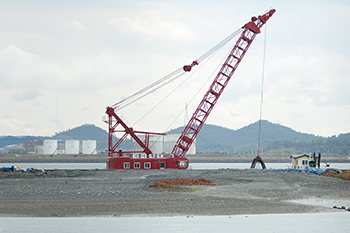
Timing and the project’s wider appeal has proven especially important. Decision-makers at various levels are presently not in agreement about future use of the site. While the local Mokpo City council, along with many local stakeholders, appears committed to conservation of the wetland, the local office of Ministry of Land, Transport and Maritime Affairs (MLTM) located in Mokpo have expressed in a direct meeting with the Project Team on September 12th that they now intend to infill two sections of the wetland, in accordance with a decade-old plan. This work started in late October 2008. This ongoing work, while earlier decided, now appears to be in contradiction of the “No Net Loss of Wetland” policy recently adopted by the National MLTM, the same ministry that has responsibility for the national wetland restoration plan, and for conservation of coastal wetlands (under both national law and international conventions, including Ramsar and the Convention on Biological Diversity). Officials from the national MLTM wetland restoration team have therefore expressed their concern about the infilling of this site, and have stated publicly their opinion that the Mokpo Namhang Urban Wetland appears to be a highly suitable candidate for conservation and restoration.
To this background, and supported by the YSLME project grant, the Birds Korea project team has as part of this project, between April and the present:
Conducted research at and relating to the site. This has included gathering existing data on birds and other biota (such resources are extremely limited pre-2006); conducting regular counts/monitoring of waterbirds (on a near-daily basis), and as part of a wider survey; subcontracting experts from Mokpo National University to survey benthos, substrates and water quality; and inviting experts to input data and opinions;
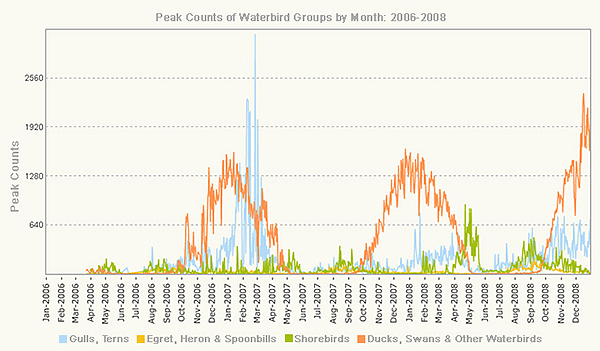
Promoted awareness of the site. We have worked through inviting media (with TV and newspaper coverage especially in May and again in September/October); through meetings with leading Mokpo city council members; through seminars and symposia, in Mokpo, and in Seoul and Changwon; through providing Symposium proceedings to interested parties through our booth at the Ramsar CoP; and through providing information in both Korean and English on our websites;
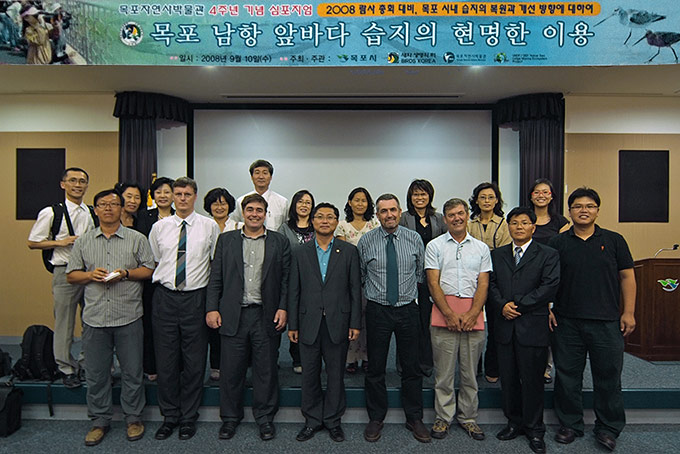 Symposium September 2008; read more here
Symposium September 2008; read more hereInvited and hosted two international experts to the site: one a professional environmental consultant (and Birds Korea member) specialising in wetland and waterbird monitoring (July-September); the other a specialist in wetland restoration and habitat management, working with the RSPB in the UK (September).
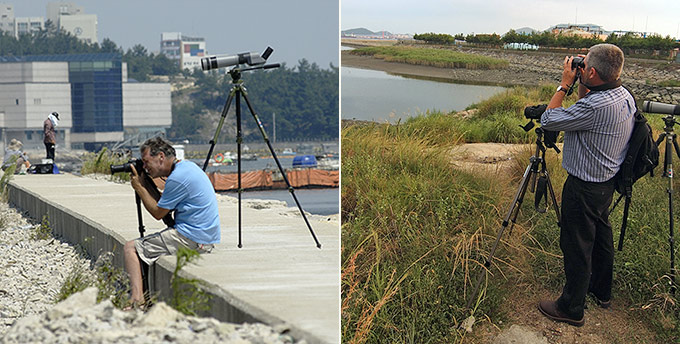
Discussed the site with members of the national coastal wetland restoration committee, as well as with Mokpo City councillors, and in meetings with officials of both the local and the national Ministry of Land, Transport and Maritime Affairs.
and
As part of the YSLME-project Birds Korea produced the presentation:
Click here to read!



